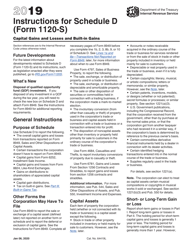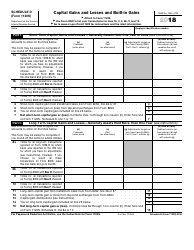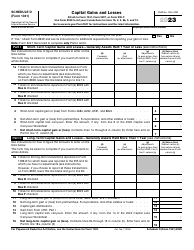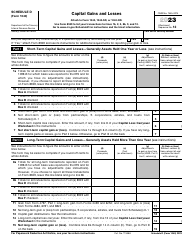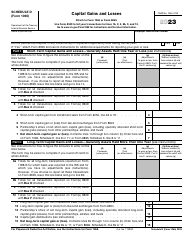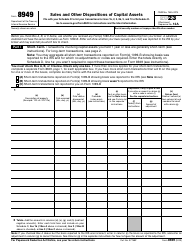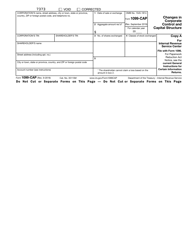This version of the form is not currently in use and is provided for reference only. Download this version of
IRS Form 1120-S Schedule D
for the current year.
IRS Form 1120-S Schedule D Capital Gains and Losses and Built-In Gains
What Is IRS Form 1120-S Schedule D?
This is a tax form that was released by the Internal Revenue Service (IRS) - a subdivision of the U.S. Department of the Treasury. The document is a supplement to IRS Form 1120-S, U.S. Income Tax Return for an S Corporation. Check the official IRS-issued instructions before completing and submitting the form.
FAQ
Q: What is IRS Form 1120-S?
A: IRS Form 1120-S is a tax form used by small corporations to report income, deductions, gains, losses, and other information.
Q: What is Schedule D?
A: Schedule D is a component of IRS Form 1120-S that is used to report capital gains and losses from the sale of assets.
Q: What are capital gains and losses?
A: Capital gains are profits made from the sale of assets, while capital losses are losses incurred from the sale of assets.
Q: What is a built-in gain?
A: A built-in gain is a gain that is recognized when a C corporation elects to become an S corporation and has appreciated assets that are sold within a certain period of time.
Q: When is Form 1120-S Schedule D filed?
A: Form 1120-S Schedule D is filed along with the annual tax return, usually by March 15th of each year.
Q: What information is required on Schedule D?
A: Schedule D requires information about the assets sold, purchase price, sale price, and any gain or loss realized.
Q: Are there any special rules for reporting long-term capital gains?
A: Yes, long-term capital gains are generally taxed at a lower rate than ordinary income. However, there may be additional considerations based on the specific circumstances.
Q: Can losses from the sale of assets offset other income?
A: Yes, capital losses can be used to offset capital gains, and any excess losses can be used to offset other income up to a certain limit.
Q: Do I need to attach supporting documents with Schedule D?
A: No, you typically don't need to attach supporting documents when filing Form 1120-S Schedule D. However, you should keep them for your records in case of an IRS audit.
Form Details:
- A 2-page form available for download in PDF;
- This form cannot be used to file taxes for the current year. Choose a more recent version to file for the current tax year;
- Editable, printable, and free;
- Fill out the form in our online filing application.
Download a fillable version of IRS Form 1120-S Schedule D through the link below or browse more documents in our library of IRS Forms.

